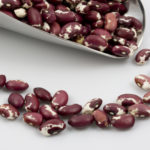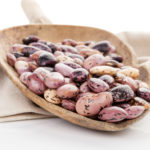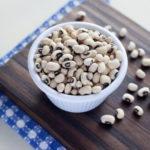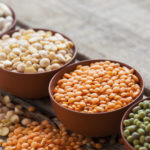Cooking With Legumes: Navy Beans
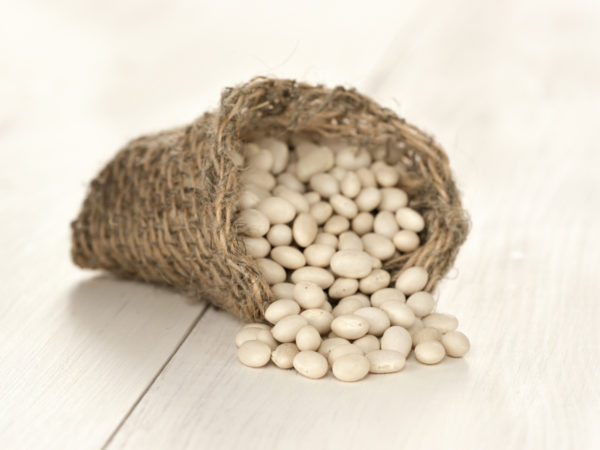
Distinctly American (though popular in the United Kingdom as well), navy beans, also known as haricot, peas or Yankee beans, are a small variety of white beans. They are best known as the foundation of Boston baked beans: navy beans stewed with molasses or maple syrup and flavored with bacon or salt pork. This was traditionally prepared on Saturdays, left in brick ovens overnight, and consumed the next day, so that colonial New Englanders could have a hot meal while still respecting the Sabbath. The navy bean is immortalized as Massachusetts’ state bean and Boston is still known as “Beantown”!
As a concentrated energy source with a long shelf life, navy beans also became a staple on U.S. Navy vessels beginning in the mid-1800s, earning them their name. Along with kidney beans, black beans and pinto beans, navy beans belong to the Phaseolus vulgaris or “common bean” family. Their creamy texture and ability to hold their shape when cooked makes them a popular choice for soups and stews, such as minestrone.
If their rich history and sweet, satisfying flavor doesn’t prove their worth, their nutritional profile certainly does: full of fiber and protein like all legumes, navy beans are also high in folate, thiamin, magnesium, phosphorous and iron. Just one cup of cooked navy beans provides almost 25 percent of the Daily Value of thiamin (vitamin B1), which is essential to maintain cognitive function. They are also a rich source of manganese and copper, trace minerals that work together as part of the body’s antioxidant defenses.
Cooking time: 60-90 minutes
Liquid per cup of legume: 3 cups
How to cook navy beans: Soak overnight. Drain water and replace with fresh, cold water for cooking. Place on stove and bring to a boil in a pot with a lid. Once boiling, reduce to a simmer, tilt lid to allow steam to escape, and leave to cook for up to 90 minutes, or until tender.


